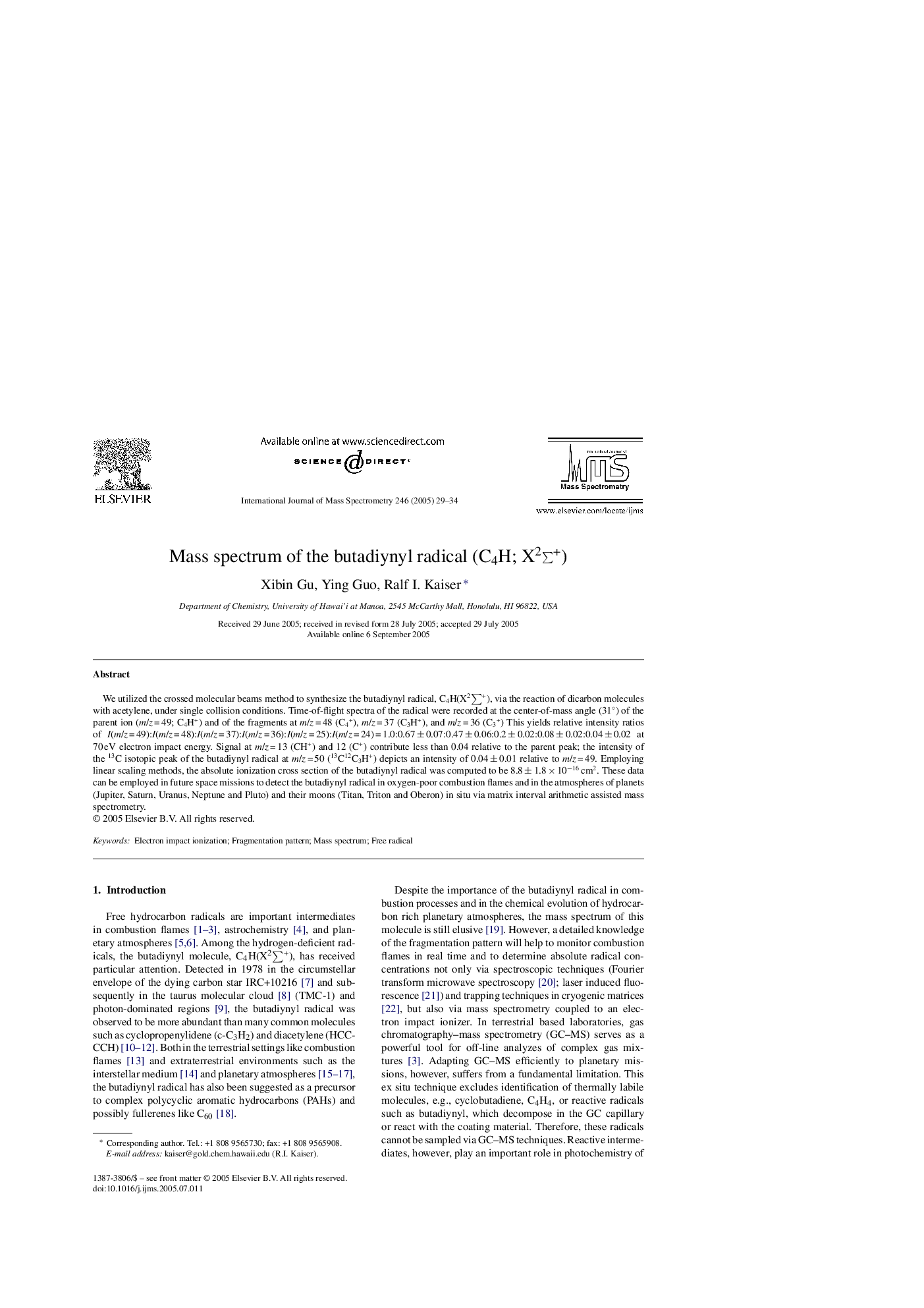| Article ID | Journal | Published Year | Pages | File Type |
|---|---|---|---|---|
| 9746607 | International Journal of Mass Spectrometry | 2005 | 6 Pages |
Abstract
We utilized the crossed molecular beams method to synthesize the butadiynyl radical, C4H(X2â+), via the reaction of dicarbon molecules with acetylene, under single collision conditions. Time-of-flight spectra of the radical were recorded at the center-of-mass angle (31°) of the parent ion (m/z = 49; C4H+) and of the fragments at m/z = 48 (C4+), m/z = 37 (C3H+), and m/z = 36 (C3+) This yields relative intensity ratios of I(m/z = 49):I(m/z = 48):I(m/z = 37):I(m/z = 36):I(m/z = 25):I(m/z = 24) = 1.0:0.67 ± 0.07:0.47 ± 0.06:0.2 ± 0.02:0.08 ± 0.02:0.04 ± 0.02 at 70 eV electron impact energy. Signal at m/z = 13 (CH+) and 12 (C+) contribute less than 0.04 relative to the parent peak; the intensity of the 13C isotopic peak of the butadiynyl radical at m/z = 50 (13C12C3H+) depicts an intensity of 0.04 ± 0.01 relative to m/z = 49. Employing linear scaling methods, the absolute ionization cross section of the butadiynyl radical was computed to be 8.8 ± 1.8 Ã 10â16 cm2. These data can be employed in future space missions to detect the butadiynyl radical in oxygen-poor combustion flames and in the atmospheres of planets (Jupiter, Saturn, Uranus, Neptune and Pluto) and their moons (Titan, Triton and Oberon) in situ via matrix interval arithmetic assisted mass spectrometry.
Related Topics
Physical Sciences and Engineering
Chemistry
Analytical Chemistry
Authors
Xibin Gu, Ying Guo, Ralf I. Kaiser,
